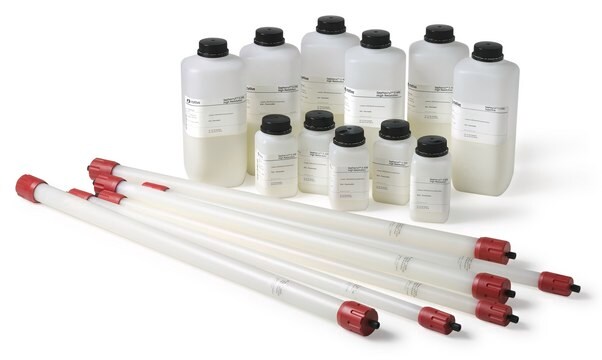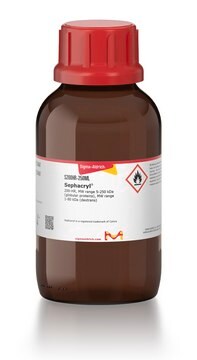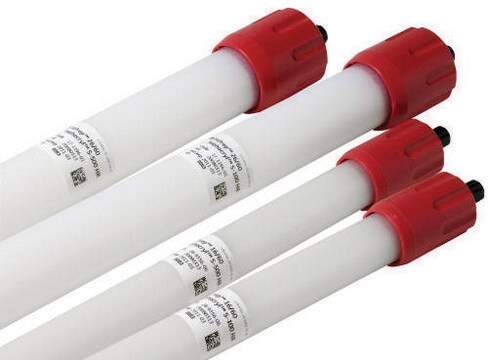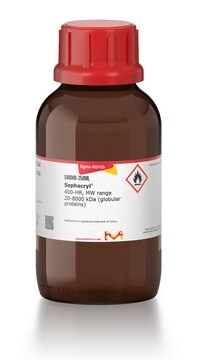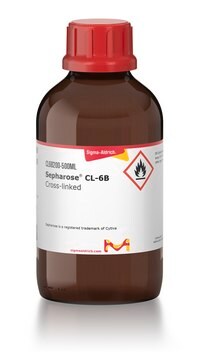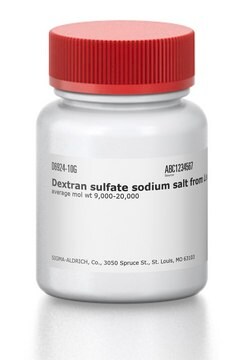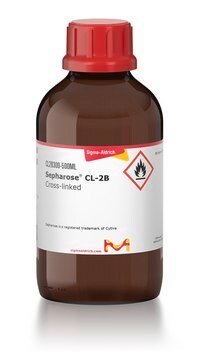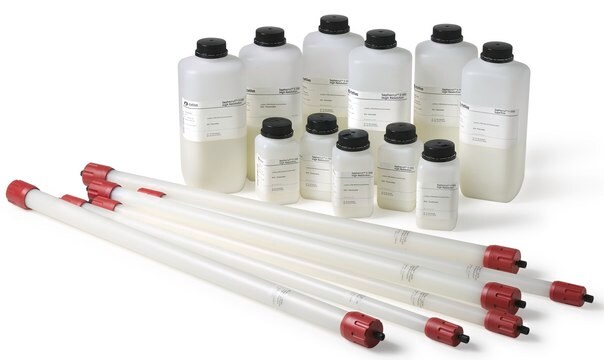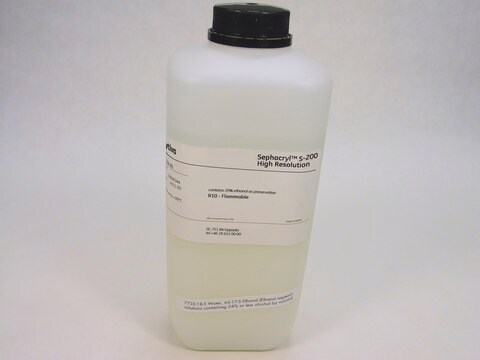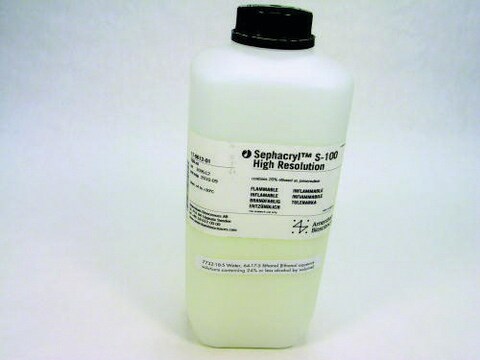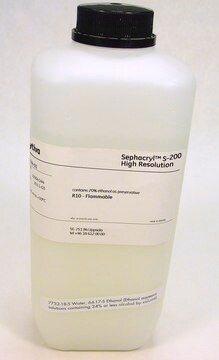S500HR
Sephacryl® Size Exclusion Resin
500-HR, MW range 40-20,000 kDa (dextrans)
Sinonimo/i:
Poly([allyl dextran]-co-N,N′-methylenebisacrylamide)
About This Item
Prodotti consigliati
Nome del prodotto
Sephacryl®, 500-HR, MW range 40-20,000 kDa (dextrans)
Descrizione
stability: stable to 0.2M NaOH
Stato
suspension (20% aqueous ethanol)
Caratteristiche
autoclavable
Matrice
crosslinked allyl dextran/N,N′-methylenebisacrylamide copolymer
Dimensione particelle
25-75 μm (wet)
Dimensione pori
40-20,000 kDa MW range (dextrans)
Compatibilità
mode of use size exclusion chromatography
Temperatura di conservazione
2-8°C
Cerchi prodotti simili? Visita Guida al confronto tra prodotti
Descrizione generale
- Supplied swollen, suspended in 20% aqueous ethanol
- Autoclavable
- Stable to 0.2N sodium hydroxide (NaOH)
- Store at refrigerated temperature (2-8 °C)
Applicazioni
Note legali
Avvertenze
Warning
Indicazioni di pericolo
Consigli di prudenza
Classi di pericolo
Flam. Liq. 3
Codice della classe di stoccaggio
3 - Flammable liquids
Classe di pericolosità dell'acqua (WGK)
WGK 1
Punto d’infiammabilità (°F)
100.4 - 109.4 °F - closed cup
Punto d’infiammabilità (°C)
38 - 43 °C - closed cup
Dispositivi di protezione individuale
Eyeshields, Faceshields, Gloves, type ABEK (EN14387) respirator filter
Scegli una delle versioni più recenti:
Possiedi già questo prodotto?
I documenti relativi ai prodotti acquistati recentemente sono disponibili nell’Archivio dei documenti.
I clienti hanno visto anche
Il team dei nostri ricercatori vanta grande esperienza in tutte le aree della ricerca quali Life Science, scienza dei materiali, sintesi chimica, cromatografia, discipline analitiche, ecc..
Contatta l'Assistenza Tecnica.